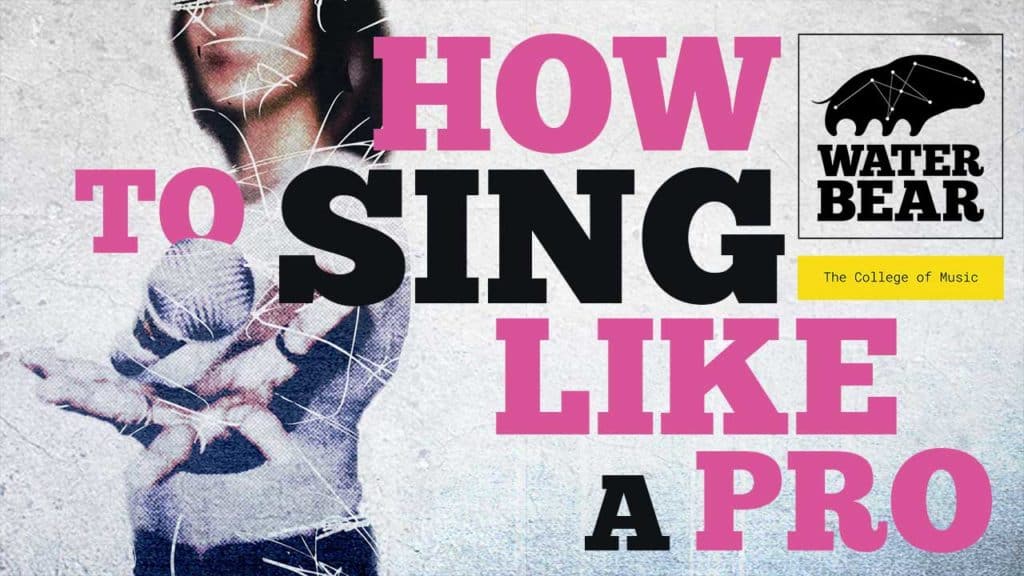JOIN US SEPTEMBER 2024 - APPLY TODAY OR BOOK YOUR PLACE ON ONE OF OUR OPEN DAYS IN BRIGHTON OR SHEFFIELD
JOIN US SEPTEMBER 2024 - APPLY TODAY OR BOOK YOUR PLACE ON ONE OF OUR OPEN DAYS IN BRIGHTON OR SHEFFIELD

Before I dive into explaining how to sing like a pro, I’d like you to think about something. As vocalists, we don’t just commit to the physical act of making music and sound, we are an entire human being. Whilst studying vocal health education further I came across the term,
“You are a whole human being, not just a voice.”
And this really struck me. We must look after the physical, technical and psychological aspects of ourselves as human beings in order to achieve our vocal aspirations. Our mind and body must work in harmony for us to sing with ease and freedom.
Singing is a journey. In order to develop we must understand that practice really does make perfect. Like honing any skill, there is no quick solution. As unique beings we all work at varying speeds and travel along our own timeline. There is, however, an opportunity to watch yourself go from strength to strength and experience how some simple steps can see big results when you commit to yourself. Here's how to sing like a pro.
I always ask vocalists to first identify what it is that they are looking to get out of vocal lessons/study or performance. This can be anything from wanting to gain more confidence with their voice to wanting to achieve a bigger vocal range. Having an idea of where you want your main point of focus to be will allow you to witness your own development. Taking stock of where you are and where you want to be will help to inform you when you finally get there! Of course, you may not know specific goals yet and that is also fine. Getting started and simply singing is the best place to start.
It’s important that vocalists make sure they are fully prepared to sing to keep the voice safe, well looked after and well supported. Now, each vocalist will be different – each is unique and no one singer the same. Even though we have the same internal mechanisms that allow us to sing, our bodies are different and should be embraced for that fact.
Dependant on what you have experienced the day before, for example, will mean each vocalist will need a different level of warm up. Some voices need more time than others. The most important thing is that we find balance otherwise either too little or too much vocal warm up can put our voice at risk of tiring or potential damage. What your warmup consists of however, can be the same for all of us. It doesn’t need to be fancy and involve lots of vocal acrobatics!
SOVT stands for Semi-Occluded Vocal Tract. In simple terms it means the mouth is partially closed. During SOVT exercises there is less impact, collision and stress on the vocal folds.
A popular way to approach SOVT is with straw phonation. There is less impact and stress on the muscles while still allowing them to stretch. Can’t find a straw? No problem! You can use a tongue/lip trill, MMM or NNNGGGG sounds to achieve the semi-occluded vocal tract exercise. See some steps below!
Preparing the voice is key, so using all the above can become a consistent part of your practice. Granted, warming up and preparing the voice isn’t the most exciting thing in the world. But when it comes to singing it is important that you feel you can just let go and let out your sound!
Start by singing through some of your favourite songs whether these are covers or your own. What you want will direct your focus here. Having an awareness of the full experience is good, however we also want to make sure that by the time we get to performing our muscle memory can kick in with all the technique stuff and we can just let go and have fun.
Our instrument is our body. This is something that I find incredibly fascinating and has been a big reason behind so much of my interest in singing. Your voice will develop and go through many changes. You will have great days and bad days. There will be times you feel out of control of your sound and times where everything just falls into place.
Remember, the key is your initial drive and love for your instrument. If you care, you will commit. And it is that commitment that will allow for a more open-minded and incredible experience for your voice. That is how you can sing like a pro.
Check out these useful videos to further your vocal knowledge:
Daily Singing Warmup For Straw Phonation
To find out more, check out our courses here.

- ‘Water bear’ is the common name for a Tardigrade.
- Tardigrades are micro creatures, found everywhere on earth.
- They are the most resilient creatures known.
- They can survive and adapt to their surroundings, even in outer space.
- Their resilience and ability to adapt and survive inspires us in everything we do. We love them.


WaterBear Education Ltd, Hanover House,
118 Queens Road, Brighton BN1 3XG, UK Map
Email: [email protected]
Tel: +44 (0) 1273 726230
WaterBear Sheffield, Unit 4, Gatecrasher,
49 Eyre Lane, Sheffield S1 4RB, UK
Email: [email protected]
Tel: +44 (0) 1143 992720

WaterBear Education Ltd, Hanover House,
118 Queens Road, Brighton BN1 3XG, UK Map
Email: [email protected]
Tel: +44 (0) 1273 726230
WaterBear Sheffield, Unit 4, Gatecrasher,
49 Eyre Lane, Sheffield S1 4RB, UK
Email: [email protected]
Tel: +44 (0) 1143 992720
- ‘Water bear’ is the common name for a Tardigrade.
- Tardigrades are micro creatures, found everywhere on earth.
- They are the most resilient creatures known.
- They can survive and adapt to their surroundings, even in outer space.
- Their resilience and ability to adapt and survive inspires us in everything we do. We love them.
